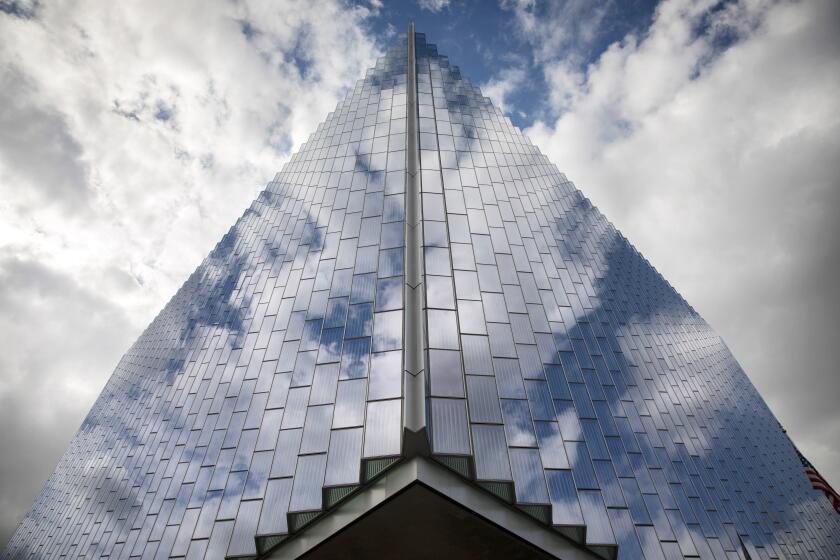Some 40 feet long, 28 feet wide...
Some 40 feet long, 28 feet wide and covered in ceramic tile, it’s a dead ringer for Santa Catalina Island. It even has painted depictions of the famous Casino Ballroom in Avalon and the island’s rugged interior, complete with tiny replicas of buffalo and hikers.
What’s more, it’s a work of art.
It’s a huge map, made of 400 tiles that were painstakingly designed to duplicate Catalina, down to every shoreline curve and cove. The map, perched near the entrance to the Catalina Conservancy’s Nature Center at the Airport-in-the-Sky, mimics its namesake, right down to its topography and its orientation to the mainland.
The map is a result of a collaborative effort sparked by Bob Hood of Rancho Palos Verdes. A frequent island visitor, Hood practically stumbled into his role in the project.
It was 1988 when, upon arriving at the island in his private plane, Hood became curious about an excavation in the patio in front of the airport. He learned that conservancy officials hoped to put up a map of Catalina as part of its educational exhibit about the island.
A board member of the Catalina Marineros, the conservancy’s boating support group, Hood offered to pay for the project and oversee its completion. His first idea, he said, was to ask Nancy Grossman, a ceramic artist from Torrance, to execute it.
“He flew me over and I saw the spot and I fell in love with it,” said Grossman, whose previous experience had been mostly in homes and some commercial projects such as hotels. “But I decided to do it because it was public art,” she said.
The map’s design was conceived in Hawthorne in a cleared-out corner of a warehouse at Hood’s electronics firm, WEMS Inc. There, Grossman guided about 20 other ceramic artists, all working voluntarily, in drawing up the plans.
They went to some lengths to ensure that theirs would be an authentic replication of the island.
“We used marine charts and charts supplied by the conservancy,” Hood said, then laid out the design on a grid, carefully outlining each tile.
“We had some longtime island residents come over to check it and make sure it was right before we fired it,” he said.
Then, each hand-painted, 11 3/4-square-inch tile was fired in the warehouse, in kilns that were specially installed there.
Ultimately, nearly 800 tiles were painted and fired, but about 400 were broken in the delicate firing process, Grossman said. It took Hood four trips to fly the fragile tiles--which altogether weighed about a ton--to the island. The project took about five months and was completed last August.
The map, on an elevated platform, is one of several exhibits on the island’s history and culture. Conservancy spokeswoman Penny O’Malley said other exhibits will be added, including slide presentations and videotapes on Catalina’s plants, animals, geology, archeology and marine life, she said.
Grossman said the project has been popular with sightseers who stop at the airport on bus tours of the interior.
“People really get a kick out of it,” Grossman said. “It’s hard to visualize the island if all you’ve seen is Avalon. This gives them a better idea of where everything is. It’s a fascinating introduction to the island.”
More to Read
Sign up for Essential California
The most important California stories and recommendations in your inbox every morning.
You may occasionally receive promotional content from the Los Angeles Times.










